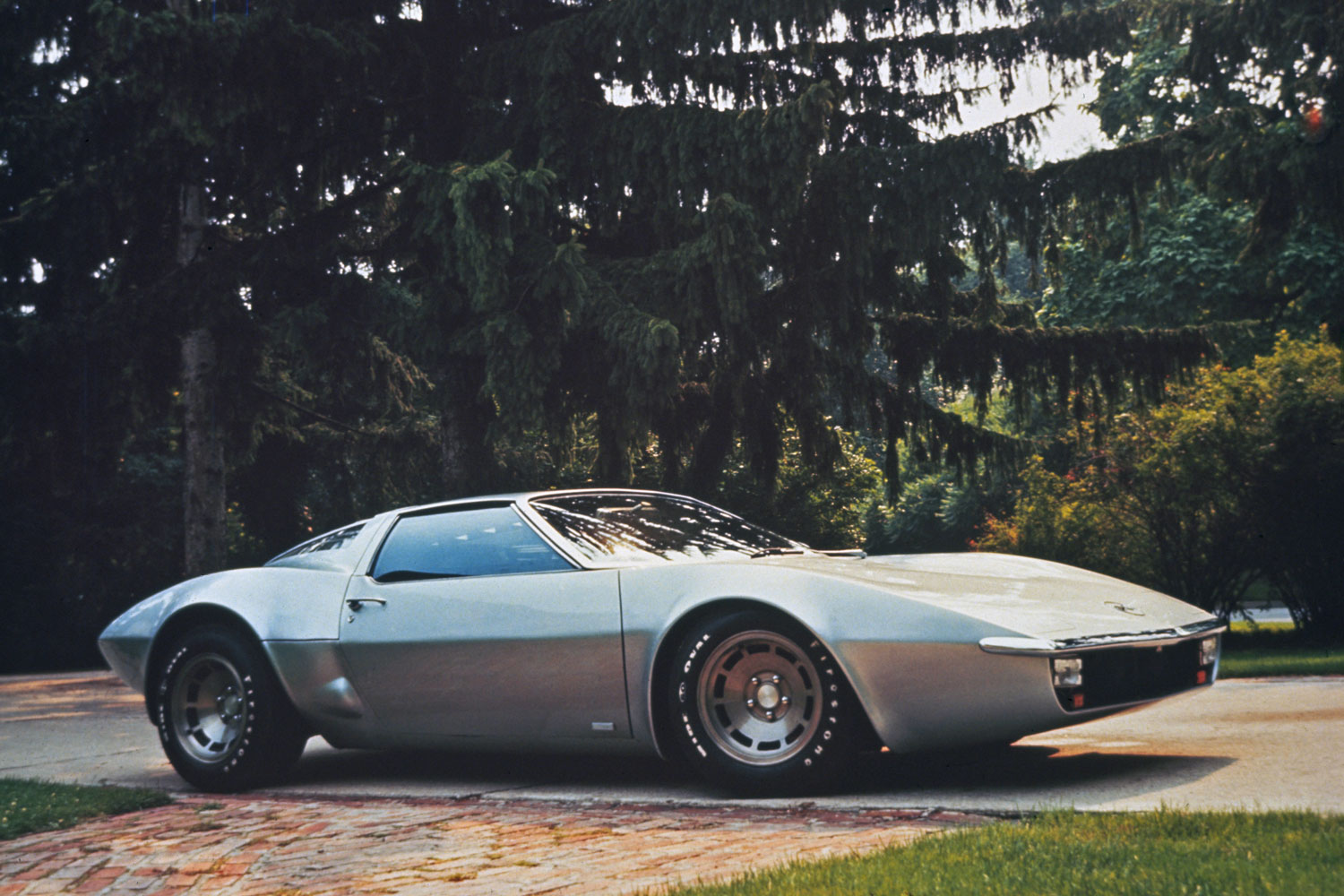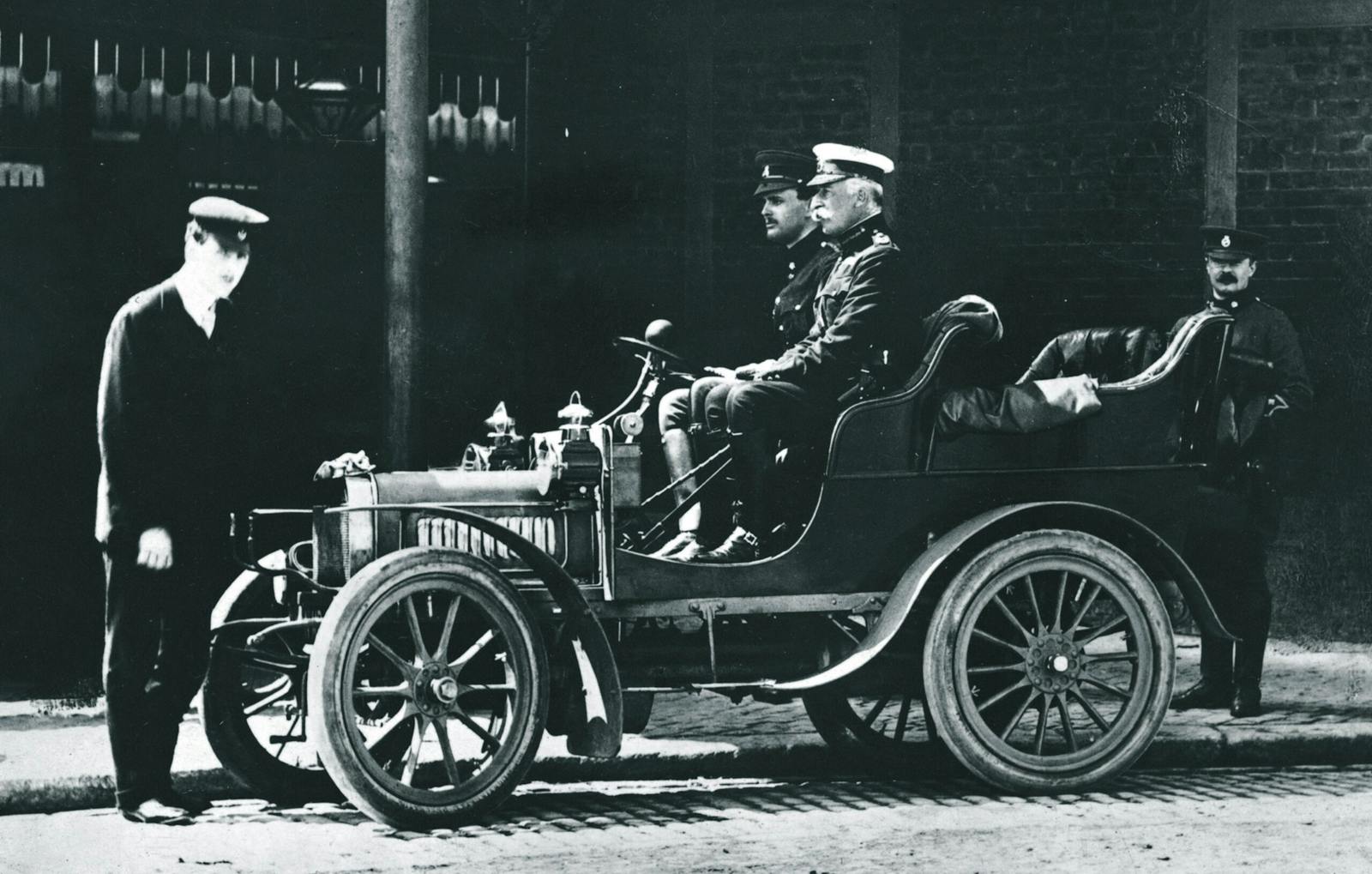Encounters with John DeLorean: Mid-engine Corvette to ill-fated DMC-12
As Chevrolet’s newly-appointed general manager in mid-1969, John DeLorean was at first supportive of Zora Arkus-Duntov’s burning passion to create a mid-engine Corvette. Zora’s prototype at the time was XP-882, a bullet-shaped coupe with a C3-esque front and a Mako Shark II show-car-like tail. It was powered by a transverse-mounted 400-cubic-inch small-block V-8 driving through an Oldsmobile Toronado/Cadillac Eldorado FWD Hydra-Matic with the drive shaft to its rear differential running through a tube in the engine’s sump. Duntov’s hope was to have it approved, designed, engineered and ready for production in 1972 for the ’73 model year.
As a young college graduate in training working in Duntov’s Corvette Engineering group at the time, I was sent one day to GM Styling on the other side of the GM Tech Center to pick up the XP-882 and drive it back to the Chevy garage. I couldn’t resist cruising around a bit on Tech Center roads (who could?) before pulling it into the garage. When I did, two men in suits standing where I parked it asked what the car was. I told them, then went back to work.
Corner office confrontation

First thing next morning, my personnel guy swooped into our office saying, “Mr. DeLorean wants to see you, now!” Oh, s**t! I thought. I’m in trouble for driving it around instead of straight back to the garage. He marched me down the hall to the big corner office. Red-faced and furious, DeLorean demanded to know why I had shown Chevy’s top-secret mid-engine Corvette prototype to a journalist. I thought my short career was over.
I had no idea who those guys were, I meekly explained. And if they should not have seen that car, what were they doing in our engineering garage? DeLorean turned those thoughts over in his mind, eased his jaw, and told me to get back to work. Whew.
I later learned that one of those “suits” was indeed a journalist visiting from Australia, the other a GM PR guy granting him an off-the-record garage tour. (Not long afterward, that same XP-882 graced the cover of Road & Track’s January 1971 issue.) It caused shock and awe at the April 1970 New York Auto Show, a surprise counter to Ford’s soon-to-be-imported mid-engine De Tomaso Pantera, AMC’s Bizzarrini-styled AMX/3 and Mercedes-Benz’s sleek C-111. The media went nuts with speculation that the XP-882 was the next Corvette, even as Zora’s mid-engine dream was snuffed out for being too expensive and impractical. Why was DeLorean so upset? He didn’t want uncontrolled leaks.
That XP-882 was later re-engineered into the 1973 Four-Rotor Corvette prototype after then-GM president Ed Cole told Zora that his mid-engine dream maybe could come true—on the condition that it be Wankel rotary-powered. Then, after Cole retired and GM gave up on rotary engines, the XP-882 was again re-purposed as the V-8-powered 1976 Aerovette.
New York interview

In 1980, by then a busy auto writer myself, I landed an assignment to profile DeLorean for United Airlines’ Mainliner magazine. I was also working on Automobile Quarterly history books on the Camaro and the Firebird, and DeLorean had been deeply involved in the creation of both. I flew to New York to interview him in his Park Avenue office, where he was confident, ebullient, and eager to talk about his soon-to-be “safety” sports car as well as the Camaro and the Firebird. He even pretended to remember almost firing me 11 years earlier.
What was his toughest challenge since departing GM and setting out on a bold quest to be the first American to create a successful new car company since Walter Chrysler in 1925? “The conviction of the financial community… that no little guy has a chance to make it,” Delorean said. “The problem has been one of credibility, of convincing the financial community that you do have a substantial chance to succeed so that they will be willing to make an investment in you.
“When we got the dealers to invest their own money and make commitments, the financial community started to believe that we were possible because the dealer is the most knowledgeable guy. The fact that we had lined up a substantial number of dealers, each of them having made an investment, was the thing that made all the rest of our financing possible. Probably if I had understood the total impossibility of it, I wouldn’t have tried. We’ve had probably five different times when it looked like we were in a tailspin headed straight into the ground. But we’ve always managed somehow to persevere. The biggest thing I think in life or in business is your staying power. If you don’t believe in it enough to fight your way through the tough times, then maybe you shouldn’t be trying to do it anyhow.
“The way we are trying to build our business is on integrity,” he continued. “We’re just a little, tiny guy trying to claw, clutch, grumble, and scrape our way up in the world, and if we… are smart enough and work hard enough, maybe 15 years from now, we are going to be another BMW. That is what our dream is. That is the image we want. We will be making money… this year but won’t have made enough until the end of the year to break even. By calendar year 1982, we will be in the black throughout the entire year.”
What about his future model plans, back in 1980? “Depending on the degree of integration, we’re capable of building anything from 120,000 to 250,000 cars a year in our Northern Ireland plant. We are planning now to add a sedan, on which we are doing a little preliminary work with Giugiaro. It is going to be a very different kind of sedan pointed at a whole different place in the market. It’s going to be very aerodynamic [with] the same essential characteristics of our current car. It is going to be designed to last forever without corrosion. It is going to be very strong but reasonably lightweight in comparison to other cars. It will probably have four gullwing doors and be a five-passenger with about the same interior accommodation as a Mercedes 450 SEL.”
That interview ended up as the cover story for the February 1981 Mainliner. And there he was, posing confidently for the cover shot with his beautiful wife Christina Ferrare, blithely unaware of the troubles that would haunt the launch of his stainless-steel dream just a few months later.
Northern Ireland DeLorean drive

Then came the press trip to Northern Ireland to see his plant and learn about and drive his car, originally labeled DMC-12, since DeLorean’s original idea was to start the car’s pricing at $12,000 to compete with the Corvette. I was fortunate to be one of about a dozen auto writers (and the only freelancer) on that trip, which my colleague Don Sherman has also documented. Most memorable recollections: flying to London on the Concorde, seeing our Belfast hotel heavily fenced and guarded by guys with big guns due to IRA terrorism threats, touring the (barely functioning) new factory and driving early build DeLoreans—first on a tiny test track, then for several days on narrow, twisty roads through colorful towns surrounded by gorgeous scenery. Lunching with one town’s leaders, I mentioned that I was half-Irish, and my mother’s maiden name was Quinn. “That is a fine working-class name,” the guy said condescendingly. I wondered if their bloody conflict was more class- than religion-based.
DeLorean was in full media-relations/ace-salesman form: warm, friendly, talkative, and surprisingly up-front about the challenge that his gull-winged, stainless-steel dream faced. The car disappointed us —it was reasonably fun to drive but lackluster in build quality, and, with a $25K price, hardly a threat to the Corvette—but most of us were fairly kind to it in our first-impression stories since the ones we drove were among the first built by an inexperienced workforce in a brand new plant. I wrote about it, gently pointing out its flaws along with its positive points, for Playboy, Ward’s Auto World, Australia’s Wheels, and Japan’s Car Graphic.
Following our return, everyone badgered DeLorean PR rep Mike Knepper (a former Motor Trend editor and Car and Driver executive editor) for press cars for further road and instrumented testing, but I don’t believe he ever provided one to anyone. The company likely feared lousy reviews, a well-founded concern. Car and Driver tested an owner’s car, which did not fare well. Then a mid-1982 C/D follow-up story, “The Decline and Fall of the DeLorean Dream,” was led by an illustration of a still-shiny DeLorean body resting forlornly on its hubs on the back lot of a chicken farm with most everything else falling off. The message was sadly clear.
Both the car and the company DeLorean created to design, engineer, and build it would soon fail embarrassingly, leading to his desperate attempt to save it with a high-finance drug deal gone terribly wrong. But the car, or at least its legend, lives on as the ultra-cool time machine in the Back to the Future franchise and as a quirky collectible—even as a new DeLorean Motor Company plans to resume DMC-12 production from original drawings, leftover parts, and new powertrains. Who among us on that four-decades-ago press trip would have predicted that?


